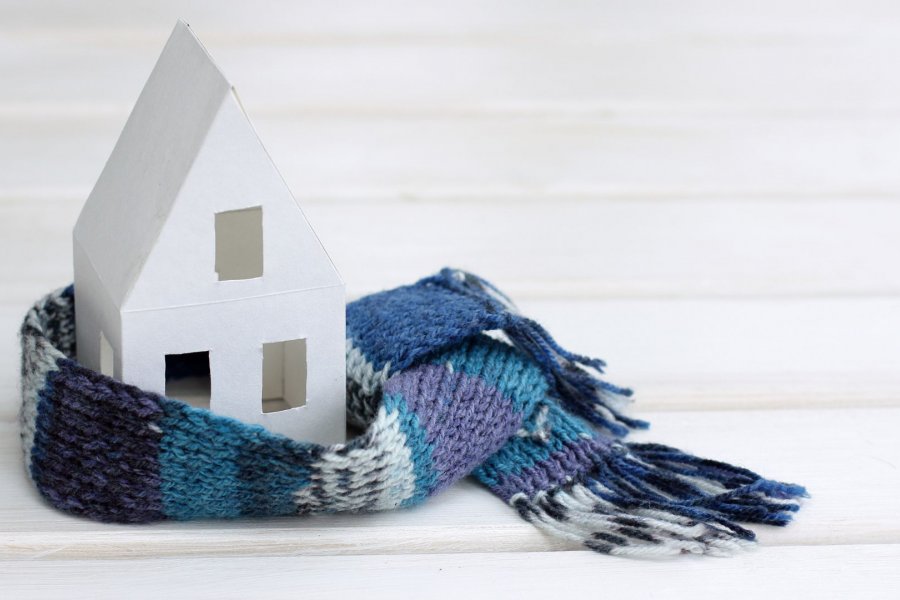How to Prepare Your Rental for Winter

Winter is a magical time of year in Maryland, with cozy nights by the fire, hot cocoa, and snowy landscapes. However, for landlords and tenants alike, winter can also be a challenging time. Preparing your rental property for winter can help ensure that it remains safe, comfortable, and in good condition throughout the colder months.
From protecting pipes from freezing to ensuring adequate heating and insulation, there are several important steps that landlords and tenants can take to prepare for winter. So, if you want to keep your rental property in top shape this winter, keep reading for some helpful tips and tricks.
Why Should You Winterize Your Rentals?
Winterizing your rental property is important for several reasons. First and foremost, it helps ensure the safety and comfort of your tenants. Winter weather can bring a host of hazards, from slippery sidewalks to power outages, and taking steps to prepare your rental can help minimize these risks.
Additionally, winterizing your property can help prevent damage that could be costly to repair. For example, freezing pipes can burst and cause water damage, while insufficient insulation can lead to energy waste and higher utility bills. By taking the time to winterize your rental, you can help avoid these issues and keep your property in good condition.
Finally, winterizing your rental can also help attract and retain tenants. A well-maintained and comfortable rental is more likely to attract renters, and happy tenants are more likely to renew their lease and recommend your property to others, minimizing vacancies.

So, whether you are a landlord or a tenant, taking the time to winterize your rental is a smart investment in safety, comfort, and long-term value.
9 Tips for Winterizing a Rental Property
Protecting your rental property from harsh weather conditions that can cause costly damage is important as winter approaches. Winterizing your rental property can help you avoid potential problems and keep your tenants safe and comfortable throughout the season.
Here are 9 tips for winterizing a rental property:
1. Clean Out the Gutters
Cleaning out gutters is an essential task for winterizing your rental property. Clogged gutters can cause water to overflow and damage your property's roof, walls, and foundation. Water seeping into your rental property can lead to water damage, mold growth, and other expensive repairs.
To avoid this, make sure to clean out the gutters thoroughly. Remove any leaves, sticks, and debris accumulated in the gutters. If you're uncomfortable doing this yourself, consider hiring a professional to help.
2. Flush and Wrap Your Water Heater
Your water heater is vulnerable to freezing temperatures in the winter, which can cause it to malfunction or even burst. To prevent this from happening, flush out the water heater and wrap it with insulation.

Flushing the water heater removes sediment buildup that can reduce its efficiency and cause it to overheat. Wrapping the water heater with insulation helps it retain heat, reducing the risk of freezing and damage. You can purchase water heater insulation kits at most hardware stores or hire a professional to install them.
3. Reverse Ceiling Fans
Most people think ceiling fans are a way to cool down in the summer but can also circulate warm air in the winter. By reversing the direction of your ceiling fans, you can push warm air down from the ceiling and into the room.
This helps to distribute heat more evenly and keeps your tenants comfortable. To reverse the direction of your ceiling fans, look for a switch on the fan motor that changes the direction of the blades. Typically, you want the blades to turn clockwise in the winter and counterclockwise in the summer.
4. Replace Air Filters
Replacing air filters is an important task when winterizing your rental property. Dirty air filters can reduce the efficiency of your heating system, making it work harder and driving up energy costs. In addition, dirty filters can also worsen indoor air quality, which can cause health problems for your tenants.
To prevent these issues, replace the air filters in your rental property before winter arrives. This will help your heating system run smoothly and keep your tenants healthy and comfortable.
5. Winterize Doors and Windows
Drafty doors and windows can let in cold air, making it difficult to keep your rental property warm during winter. To prevent this, make sure to winterize your doors and windows. This can include adding weatherstripping, caulking gaps or cracks, and installing storm windows or doors.
.jpg)
By sealing up any drafts, you can keep your rental property warm and cozy throughout the winter.
6. Add a Chimney Balloon
If your rental property has a fireplace, preventing cold air from entering the chimney is important. One way to do this is to install a chimney balloon. You insert this inflatable balloon into the chimney to block cold air from coming in.
Chimney balloons are easy to install and can be removed when you want to use the fireplace. They're also a cost-effective way to keep your rental property warm and comfortable during the winter.
7. Check Your Roof
Checking your rental property's roof is an important step in winterizing your property. Heavy snow, ice, and freezing temperatures can cause damage to your roof, which can lead to leaks and other problems.
To prevent this, make sure to inspect your roof before winter arrives. Look for any signs of damage, such as missing shingles or cracks in the roof. If you notice any issues, hire a professional to repair them before winter arrives. This can help prevent costly damage to your rental property.
8. Close Crawl Space Vents
If your rental property has a crawl space, closing the vents during the winter is important. This can help prevent cold air from entering the crawl space and freezing the pipes, which can cause them to burst.

Closing the vents can also help keep your rental property warmer and more energy-efficient. If you're unsure how to close the crawl space vents, consult a professional or check the manufacturer's instructions.
9. Cover Hose Spigots
If you have outdoor hose spigots at your rental property, it's important to cover them before winter arrives. This can help prevent the pipes from freezing and bursting, which can cause costly damage to your rental property.
You can use foam insulating covers available at most hardware stores to cover the hose spigots. These covers slip over the fixtures and help protect them from the cold. Remove any hoses from the spigots and drain the water before covering them. This will help prevent any remaining water from freezing and damaging the pipes.
Bottom Line
Winterizing your rental property is an important task that can help protect your investment and keep your tenants comfortable and safe throughout the winter months. These tips can prepare your rental property for the cold weather and prevent costly damage and repairs.
Remember to clean out gutters, flush and wrap your water heater, reverse ceiling fans, replace air filters, winterize doors and windows, add a chimney balloon, check your roof, close crawl space vents, and cover hose spigots.
If you're a landlord or property owner wanting to ensure your rental property is winter-ready, consider working with a professional property management company like McKenna & Vane Property Management.
Our experienced team can help you manage your rental property, including winterizing it to protect it from the cold weather. Contact us today to learn more about our property management services and how we can help you protect your rentals.
